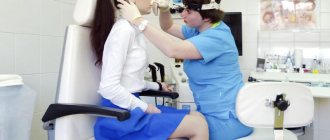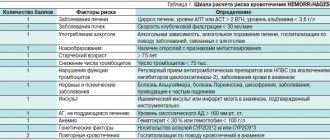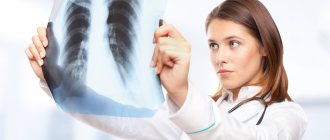Symptoms
Because VSD affects the entire body, symptoms may also appear in one or more of its systems. The most common symptoms encountered with neurocircular dysfunction are listed below, depending on the type of disease: sympathicotonia or vagotonia.
General disorders of the body:
- high fatigue;
- weakness;
- sleep problems such as insomnia or drowsiness;
- Bad mood.
Violations by systems.
Nervous system:
- dizziness;
- headache;
- fainting;
- slight increase in temperature.
Digestion:
- intestinal problems;
- stomach ache.
The cardiovascular system::
- pain and heart murmurs;
- change in blood pressure.
Respiratory system:
- labored breathing;
- frequent shortness of breath, even with light exertion.
Urinary system:
- increased frequency of urination;
- increased frequency of urges at night.
Typically, the disease proceeds in a sluggish form or bothers the patient with attacks, they are also called vegetative crises. Crises last from several minutes to several hours. Emotional experiences, physical or mental stress, infections - all this can become a catalyst for another attack.
Predisposing factors for the development of VSD (vegetative-vascular dystonia)
Predisposing factors contributing to the occurrence of the disease (syndrome) of VSD are diseases of the nervous system, hereditary and constitutional predisposition; periods of hormonal changes in the body (pre- and puberty, pregnancy, childbirth, dysvariant disorders); personality traits of the patient (anxious, hysterical, suspicious, accentuated personalities); physical inactivity from childhood; focal infection; osteochondrosis; diseases of internal organs; endocrine diseases; allergic diseases.
Diagnostics
Diagnosing VSD at home is impossible, due to the fact that to detect the disease it is necessary to examine all organs that are bothering the patient. For diagnosis, the following manipulations are carried out:
- interpretation of urine and blood tests;
- electrocardiography;
- echocardiography;
- breath tests;
- Ultrasound of the abdominal organs;
- electroencephalography;
- echoencephalography.
Also, when identifying a disease, it is important to study the patient’s hereditary information.
Doctors note that with sympathicotonia, patients were found to have hereditary diseases, such as diabetes mellitus or hypertension, and with vagotonia, neurodermatitis, ulcers or asthma. It is genetic predisposition that is the main factor influencing the risk of developing VSD.
Causes of VSD
External factors causing the development of VSD are acute and chronic psycho-emotional stress; iatrogeny; infections (tonsillogenic, carious, bacterial, viral); physical and chemical effects (brain injuries, chronic intoxication, hyperinsolation, vibration, ultra-high frequency currents, ionizing radiation), alcohol abuse; overwork.
The interaction of internal and external factors leads to disruption at any level of the complex neurohumoral and metabolic regulation of the cardiovascular system, and the leading link in the pathogenesis of VSD is damage to the hypothalamic structures of the brain, which play a coordinating and integral role in the body. Neurologists, neuropathologists and reflexotherapists believe that the leading role in the development of VSD is given to hereditary-constitutional factors, which manifest themselves in the form of functional insufficiency of the regulatory structures of the brain or their excessive reactivity; features of the course of a number of metabolic processes and altered sensitivity of the peripheral receptor apparatus. Dysregulation manifests itself in the form of dysfunction of the sympathoadrenal and cholinergic systems, histamine-serotonin and kallikrein-kinin systems, disorders of water-salt and acid-base states, oxygen supply to physical activity, and decreased oxygen in tissues. All this leads to the activation of tissue hormones (serotonin, histamine, catecholamines) with subsequent metabolic disorders, microcirculation with the development of degenerative processes in the myocardium.
Treatment
Despite the genetic predisposition to the disease, its development can be prevented, subject to compliance with the regime, dosage time for work and rest, as well as proper nutrition. So, if a patient has high blood pressure, it is worth reducing the amount of salt, confectionery, fatty foods, and fried foods consumed. With low blood pressure, doctors recommend not to indulge in foods containing iodine, sodium and potassium in large quantities, to maintain a sleep schedule, not to overwork, and to avoid stressful conditions.
In the fight against the disease, experts focus on a non-drug method, namely:
- massage;
- acupuncture;
- physiotherapy;
- water procedures.
To reduce and alleviate symptoms, medicinal herbs are used:
- Eleutherococcus;
- ginseng root;
- lure;
- Aralia;
- motherwort;
- valerian;
- hawthorn.
In case of low effectiveness of the described methods, doctors resort to the use of pharmaceuticals, which are selected separately for each patient. In addition, antidepressants, sedatives, vitamin-mineral complexes, and drugs that restore blood supply to the brain can be used.
For successful recovery, regular examination is required - once every 3-6 months. Neurocircular dysfunction, as a rule, intensifies in spring and autumn, so it is better to prescribe all therapeutic measures at this time of year.
In case of untimely or poor-quality treatment, dystonia progresses and leads to the appearance of a variety of pathologies in the body, but if you follow the doctor’s instructions and monitor the course of the disease, the prognosis is favorable.
Autonomic dystonia syndrome
The basic principles of treatment are as follows:
- individuality - the onset and development of the disease, the severity of its course are considered, symptoms are studied;
- integrated approach - treatment includes various types of therapeutic effects on the body (drug therapy, physiotherapy, physical therapy, acupuncture, herbal medicine, etc.);
- long-term implementation of therapeutic measures - to eliminate changes in the autonomic nervous system it is necessary to spend more time than for the formation and appearance of disorders;
- timely therapy. To achieve success in treatment for VDS, it is better to start it in the initial stages of the disease;
- psychotherapeutic activities are carried out not only with the sick child, but also with his parents
Therapy for Autonomic Dystonia Syndrome includes a complex of non-drug and medicinal methods. Only in case of severe or prolonged manifestations of SVD, medications are used. For mild cases of the disease, non-drug correction methods are used in combination with routine and psychotherapeutic measures. It is important for the patient to maintain a daily routine and not overload himself with physical and mental activity. Walking should be at least 2 hours a day, night sleep should be at least 8-10 hours. Older children and teenagers should spend less time watching television programs, working on the computer, spending time should be no more than 1-1.5 hours a day. day. Parents need to take care of creating a normal psychological climate, eliminating neuropsychic overload and conflicts in the family and school.
Correction of autonomic disorders is carried out by changing the diet. To do this, reduce the consumption of table salt, sweets, fatty foods, flour products, tonic drinks and increase the consumption of potassium and magnesium salts with food, which are found in cereals, fruits, legumes and vegetables, replace sunflower oil with olive oil - these are the basics of diet therapy for SVD.
Children and adolescents diagnosed with hypotensive VDS are recommended to eat food containing a sufficient amount of liquid, tea and coffee only in combination with milk, marinades, kefir, chocolate, milk, pea and buckwheat porridge, i.e. products that affect the stimulation of the autonomic nervous system and adrenergic receptors that control vascular tone. In the hypertensive form of SVD, it is reasonable to moderately limit the consumption of table salt, with the introduction of foods that reduce vascular tone and the activity of autonomic innervation, such foods include barley porridge, carrots, beans, salads, milk, spinach, and cottage cheese. For the cardiac type of SVD, it is recommended to eat food that improves the properties of the blood, introducing vegetable oil, gray porridge, citrus fruits, and a moderate amount of spices into food. With all options, it is necessary to take honey at night for at least 2-3 months, various juices, compote of sea buckthorn, viburnum, rose hips, rowan, cranberries, apricots, carrots, chokeberries, lingonberries, dried apricots, raisins, infusions, as well as mineral waters .
Exemption from physical education and sports is not recommended. The only exceptions are forms of the disease with a crisis state. In these cases, it is necessary to do therapeutic exercises. Swimming, hiking, skating and skiing, cycling, active games, dosed running and walking have a beneficial effect. Therapeutic massage of the cervical-collar area and spine is beneficial (the course is 15-20 sessions).
For the hypotensive type of SVD, preference is given to active types of physical activity, such as dancing, shaping, tennis, etc. For the hypertensive type, the following sports are recommended: walking, swimming, hiking. For cardiac diseases - slow running, swimming, badminton. For all types of SVD, group sports (basketball, football, volleyball) are not recommended.
Treatment with physiotherapeutic methods, such as sinusoidal modulated currents, ultrasound, inductothermy, galvanization using the reflex-segmental technique or the method of general influence, electrosleep, paraffin and ozokerite applications on the cervical-occipital zone is considered successful; it is especially good to use electrophoresis of drugs on the upper cervical spine. For vagotonia, electrophoresis is performed with calcium, mesatone, caffeine, for sympathicotonia - with a 0.5% solution of aminophylline, papaverine, magnesium sulfate, bromine. The procedures are performed on the cervical-collar region. For SVD of the mixed type, electrophoresis of a 1% solution of novocaine and 0.2% solution of potassium iodide is used according to the orbital-occipital technique and endonasal electrophoresis of a 2% solution of novocaine. Such procedures are carried out every other day. The course consists of 10-12 procedures; if necessary, treatment is repeated after 1.5-2 months.
Drug therapy is administered after applying the complex of measures described above or in combination with them. It begins with drugs that are widespread and have a small number of side effects (valerian, bromine, zamanika, etc.). The treatment is long-term, so the drugs are prescribed gradually, replacing one after another, while alternating different methods of influencing the body. Medicines are selected individually, strictly observing the age-specific dose. In preschool age, psychopharmacotherapy uses, first of all, sedatives of plant origin: valerian, motherwort, hawthorn, peony, novopassit, soothing herbal mixtures containing mint, hops, oregano, valerian, hawthorn, wild rosemary, sage, motherwort, St. John's wort. Sedative preparations are used for a long time - up to 6 months, in courses with breaks: the first 2 weeks of each month are used, then a break is taken at the beginning of the next month.
Tranquilizers and antipsychotics have a sedative effect and therefore form part of the therapy. Tranquilizers reduce neurotic symptoms such as fear, apprehension, anxiety, have a good effect in functional cardiopathy (extrasystole and cardialgia), vascular dystonia, falling asleep becomes easier, some of the drugs can have an anticonvulsant effect. For sympathicotonia, hypersympathicotonic reactivity, use: seduxen (diazepam) 5-15 mg/day, tazepam (oxazepam) 15-30 mg/day, Elenium (chlordiazepoxide) up to 5-15 mg/day, etc. These drugs are not recommended for children having an initial vagotonic tone, with a tendency to hypotension. For vagotonia, amizil is prescribed at a dose of 1-3 mg/day. For mixed variants of SVD, use meprobamate 0.2-0.8 g/day, phenibut 0.25-0.5 g/day, belloid and bellaspon (bellataminal) no more than 1-3 tablets per day in accordance with age. All tranquilizers for children with SVD and functional cardiopathy are prescribed in minimal doses, after which they are slowly increased. It is better to take the medicine after lunch or in the evening. The duration of treatment with small doses is up to 2 months. and more.
Neuroleptics reduce the response to external stimuli. Children diagnosed with SVD are treated with “mild” neuroleptics, which are usually well tolerated, in case of ineffectiveness of tranquilizers: frenolone 5-15 mg/day, Sonapax (Melleril) for preschool children 10-20 mg/day, schoolchildren 10-20 mg/day 20-30 mg/day, teralen 5-15 mg/day. The treatment includes a combination of seduxen, amizil and sonapax.
Further drug treatment is prescribed depending on the type of dystonia in the child. A good therapeutic effect of sedative herbal infusions is observed in the correction of arterial hypertension. Sometimes antispasmodic medications are used (dibazol, papaverine, no-shpa). In the treatment of high blood pressure, it is possible to use the calcium antagonist nifedipine.
Treatment of arterial hypertension begins with the use of small doses of drugs orally to avoid an excessive decrease in blood pressure. If blood pressure cannot be controlled when the therapeutic dose of one drug is reached, combination therapy is used.
Calcium antagonists and ACE inhibitors are often used. These drugs can improve the quality of life of patients due to the relatively low frequency of adverse reactions and high efficiency.
The ultimate goal of treatment of arterial hypertension in older children is a persistent reduction in diastolic blood pressure to a level not exceeding 80-90 mm Hg. Art.
Given the considerable prevalence of the disease, every teenager needs to be screened to determine blood pressure levels, even in the absence of any disease. Children with identified arterial hypertension require a detailed study to establish the cause of increased blood pressure and determine further therapy aimed at preventing damage to vital organs and systems.
In cases of severe arterial hypotension, bradycardia, and vagotonia, psychostimulants of plant origin are prescribed - tincture of lemongrass, ginseng, zamanikha, aralia, extract of eleutherococcus and rhodiola. Sometimes it is possible to combine them for a short period with small doses of acephen, caffeine-sodium benzoate, caffeine.
For children with SVD against the background of residual organic changes in the central nervous system, the use of neurometabolic stimulants (cerebroprotectors - nootropil, pangogam, etc.) is indicated. To improve microcirculation, Trental, Cavinton, Stugeron are prescribed, taking into account the data of the initial vegetative status. For sympathicotonia, potassium preparations and vitamins (B4, E) are used, and for vagotonia, pyridoxal phosphate (vitamin B.6).
Currently, in the treatment of almost any form of SVD, dietary supplements of plant origin, which include coenzymes, microelements and vitamins, are widely used.
Ways to combat vagotonia
Only a doctor can establish a diagnosis and select the correct treatment complex.
The treatment course is selected individually, taking into account the patient’s age category, his complaints and the presence of concomitant diseases.
Treatment of vagotonia in adults requires an integrated approach using drug therapy and other techniques.
It is necessary to consult several specialists - a neurologist, endocrinologist, psychiatrist and therapist. In many cases, individual conversations with a psychologist are required.
A mild form of autonomic disorder usually does not require medication. In this case, simple preventive measures can help, such as proper nutrition, sleep patterns, rest, moderate physical activity, and eliminating sources of stress.
In addition, in the absence of contraindications, physiotherapeutic procedures are useful - electrophoresis, infrared laser therapy and other courses.
Physiotherapy is aimed at relieving muscle tension, improving blood circulation and lymph outflow.
Also, daily walks in the fresh air, light exercises, visiting the pool, massage and other relaxing procedures have a beneficial effect on relieving the symptoms of vagotonia.
Drug therapy is prescribed for adults with severe manifestations of the disease. As a rule, they are prescribed:
- sedatives for the nervous system;
- antidepressants;
- restorative drugs;
- vitamin complexes, herbal medicines;
- preparations with magnesium and potassium.
The course of administration and type of medication should be prescribed only by the attending physician.
Folk remedies
Traditional medicine has proven itself well in the treatment of vagotonia: herbal infusions and tea with herbs have a beneficial calming effect on the body:
- Hawthorn fruits will help strengthen the heart muscle and improve blood circulation;
- Using ginseng tincture will help calm the nervous system, improve metabolic processes, boost the immune system and reduce the symptoms of vagotonia;
- Motherwort, St. John's wort, and thyme will help improve sleep, reduce excitability and normalize the emotional state;
- Reduce headaches; mint is good as a pain reliever and sedative.
The treatment takes a long, long course. The nervous system has been weakened for years, and it must be treated thoroughly.
Causes and factors contributing to the occurrence of vagotonia in adults
A specific cause causing the state of vagotonia has not been identified. First of all, there are several unfavorable factors that simultaneously affect the body and cause the patient’s painful condition.
In medical practice, the following factors contributing to the development of vagotonia are considered:
- traumatic brain injuries, including concussion;
- intracranial pressure;
- cervical spine injuries;
- prolonged emotional stress conditions;
- impaired functioning of the digestive and respiratory systems;
- presence of chronic diseases;
- diabetes;
- lack of physical activity;
- sudden change in climatic conditions;
- genetic predisposition;
- congenital tendency in case of damage to the nervous system during its prenatal formation;
- the period of menopause in women as a result of hormonal changes.
Such factors do not indicate a 100% probability of vagotonia, but they significantly increase the risk of its development.
Complications
Autonomic dysfunction is not a harmless condition of the body - periodic attacks have an adverse effect on the functioning of many organs and, without proper attention, can lead to the development of complications, such as:
- ischemic stroke;
- hypertension;
- bronchial asthma;
- stomach ulcer;
- mental disorder.
Without proper treatment, vagotonia can become chronic, in which the symptoms are constant or exacerbations (crises) occur with a sharp deterioration in well-being.





